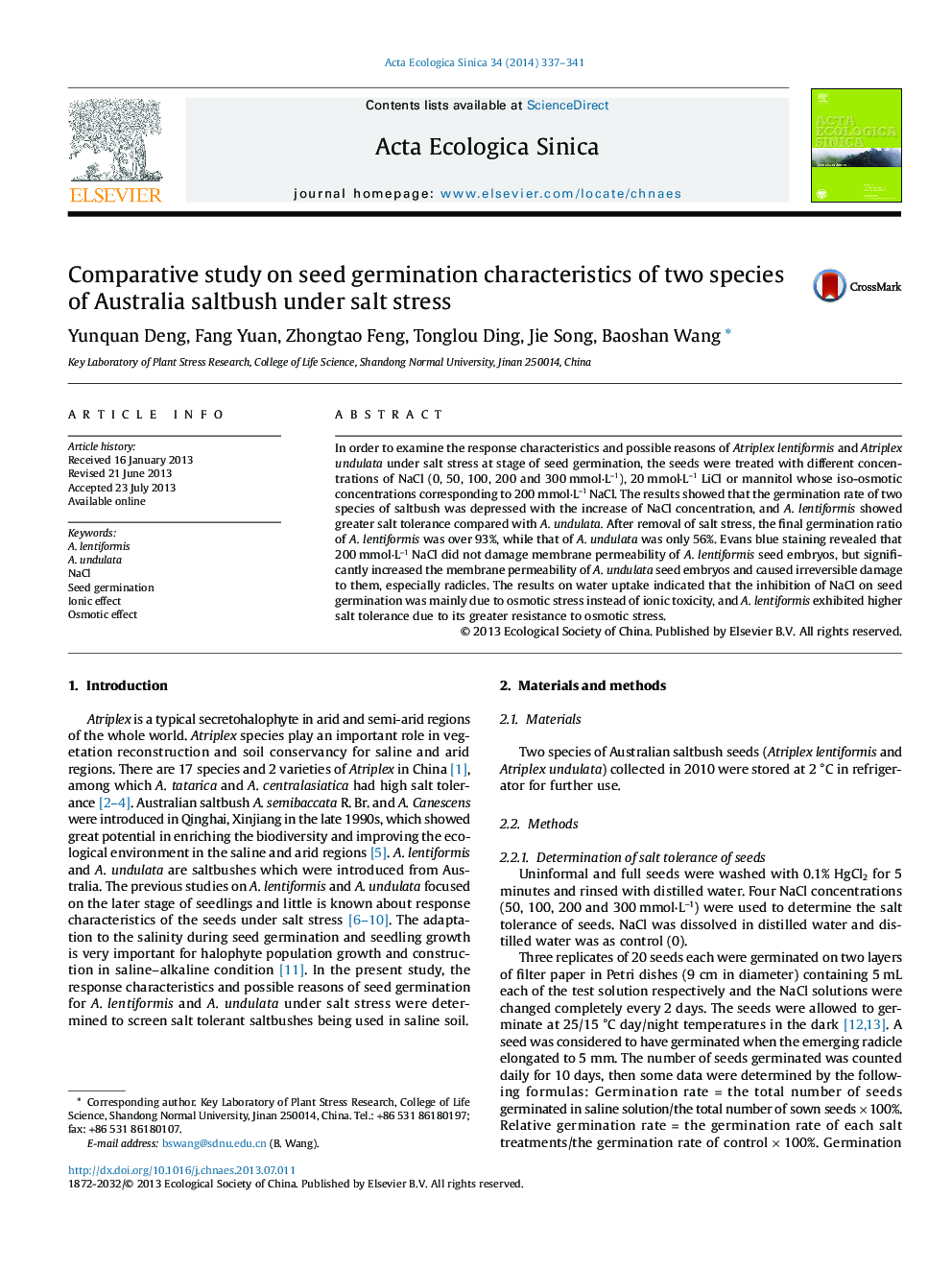| Article ID | Journal | Published Year | Pages | File Type |
|---|---|---|---|---|
| 4379873 | Acta Ecologica Sinica | 2014 | 5 Pages |
In order to examine the response characteristics and possible reasons of Atriplex lentiformis and Atriplex undulata under salt stress at stage of seed germination, the seeds were treated with different concentrations of NaCl (0, 50, 100, 200 and 300 mmol⋅L−1), 20 mmol⋅L−1 LiCl or mannitol whose iso-osmotic concentrations corresponding to 200 mmol⋅L−1 NaCl. The results showed that the germination rate of two species of saltbush was depressed with the increase of NaCl concentration, and A. lentiformis showed greater salt tolerance compared with A. undulata. After removal of salt stress, the final germination ratio of A. lentiformis was over 93%, while that of A. undulata was only 56%. Evans blue staining revealed that 200 mmol⋅L−1 NaCl did not damage membrane permeability of A. lentiformis seed embryos, but significantly increased the membrane permeability of A. undulata seed embryos and caused irreversible damage to them, especially radicles. The results on water uptake indicated that the inhibition of NaCl on seed germination was mainly due to osmotic stress instead of ionic toxicity, and A. lentiformis exhibited higher salt tolerance due to its greater resistance to osmotic stress.
